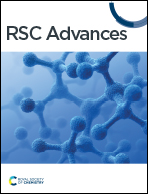Abstract
A novel octaurea-calix[4]tube (UC4T) has been synthesized in three steps from the original Beer's p-tert-butylcalix[4]tube ionophore. In a polar solvent (DMSO-d6), UC4T rapidly interconverts between two identical conformations with C2v symmetry for the two calix[4]arene subunits. However, in a less polar solvent mixture (CDCl3/DMSO-d6, 98 : 2), UC4T adopts a highly distorted asymmetric structure, which hinders the formation of typical tetraurea calix[4]arene capsular assemblies. The complexation of potassium (or barium) cations inside the dioxyethylene ionophoric binding site of UC4T triggers a C2v to C4v symmetry rearrangement of the two calix[4]arene subunits. This rearrangement leads to the formation of a transient capsular dimeric species observed in solution upon the addition of KI or BaCl2·2H2O to a solution (CDCl3/DMSO-d6, 98 : 2) of the macrocycle. X-ray studies confirm UC4T's ability to adopt different asymmetric conformations, depending on its interactions with solvent molecules. Two distinct crystal forms (α and β) of UC4T have been obtained, each displaying divergent calix[4]arene subunits with pinched-cone conformations. These conformations exhibit distinctive head-to-tail (α) or head-to-head/tail-to-tail (β) orientations of the ureido groups, which are involved in hydrogen bonding with solvent molecules. Notably, the pseudo-capsular 1D supramolecular polymeric arrays observed in the β form of UC4T assemble to create large parallel solvent channels.
![Graphical abstract: Influence of H-bond competitors on the solvent-dependent structures of an octaurea-calix[4]tube](/en/Image/Get?imageInfo.ImageType=GA&imageInfo.ImageIdentifier.ManuscriptID=D3RA08764F&imageInfo.ImageIdentifier.Year=2024)


 Please wait while we load your content...
Please wait while we load your content...